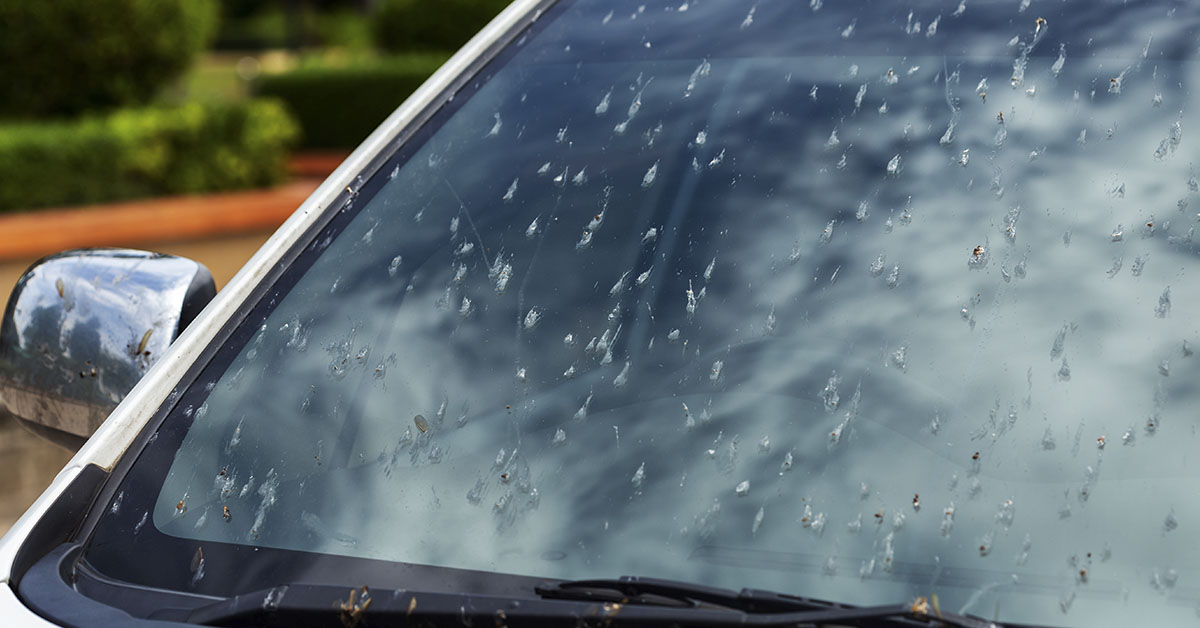Car windshields used to be prime hotspots for bugs. Insects would fly into the path of the moving vehicle and end up splattering against the glass. But experienced drivers might notice that there are fewer splatterings these days. While this might seem a good thing at first, it’s not fun to drive with bug guts in your face; it’s actually a sign of something more sinister. Ecologists have noticed the decline in bug splatters and believe it’s a symptom of our planet’s “insect apocalypse.”
Where Have All the Bugs Gone?
A survey by the UK’s Kent Wildlife Trust discovered that 50% fewer insects splatter on cars compared to 15 years ago. The team analyzed 650 car trips between June and August 2019 to find these figures. The drivers reported how many bugs hit their registration plate. Compared to a similar study by the Royal Society for the Protection of Birds (RSPB) in 2004, the bug splatters had reduced by about 50%.
After finding these results, the researchers began investigating their reason. They theorized that modern cars are more aerodynamic, which makes them less likely to collide with bugs flying by. So they encouraged drivers with classic cars to partake in their survey. But the answer pointed to the bugs themselves. Or rather, the notable decline in insect populations. [1]
“This difference we found is critically important, because it mirrors the patterns of decline which are being reported widely elsewhere, and insects are absolutely fundamental to food webs and the existence of life on Earth,” said Paul Tinsley-Marshall from Kent Wildlife Trust. “It’s pretty horrendous.”
This is far from the first study to account for this decline. Over the past couple of decades, more research has appeared and provided evidence for this issue. For instance, a Danish study in 2019 found an 80–97% decline of bugs splattering on windshields. “Most naturalists who are out in nature have seen this coming over a long time,” said Anders Pape Møllerfrom the Paris-Sud University in France. “My colleagues remember going on summer holidays as children and their parents had to stop their car to clean the windscreen so they could continue. This is certainly not a problem any more.” [2]
Another Puerto Rican study from 2018 discovered the insect populations around the El Yunque National Forest have diminished by 10–60% since the 1970s. All of these worrying studies point toward what some scientists call an “insect apocalypse.” While that might seem nice—imagine picnics without the ants and bonfires without the mosquitoes—insects are integral to our ecosystem. Their demise can lead to catastrophic events for people and all beings on Earth. For instance, another survey analyzed the number of bugs hitting windshields in rural Denmark every summer from 1997 to 2017. These researchers noticed an 80% decline in bug splatters. They also noticed a similar decline in the swallows and martins population, both being birds that feed on insects.
The Insect Apocalypse
So the question remains: What’s killing all of the bugs? As expected, there are multiple potential reasons, including pesticides, light pollution, loss of natural habitats, and effects of climate change. “In my 50 years, the temperature in April, May and June has increased by 1.5C [2.7F] on average in my study area,” Møller said. “The amount of rain has increased by 50%. We are talking about dramatic differences.”
To better understand the decline, let’s compare these findings to a location that suffers from climate change but not other reasons like pesticides and light pollution. Researchers surveyed weekly data from a stream in a nature reserve in Germany that is safe from most human impact. “Overall, water temperature increased by 1.88C and discharge patterns changed significantly. These changes were accompanied by an 81.6% decline in insect abundance,” said the research team. “Our results indicate that climate change has already altered [wildlife] communities severely, even in protected areas.”
So, although cleaner windshields might seem like a good thing, there are many serious consequences to losing critters and creepy crawlies. “These new studies reinforce our understanding of the dangerously rapid disappearance of insect life in both the air and water,” said Matt Shardlow, the chief executive of the charity Buglife. “It is becoming clear that the four horsemen of the insect apocalypse are climate change, habitat destruction, habitat fragmentation, and pollution. It is essential we create more joined up space for insects that is safe from pesticides, climate change and other harm.”
In the meantime, scientists are working to understand and reverse this decline. Although they can theorize what will happen if all bugs can vanish, there’s no way of knowing all of the ripple effects. But entomologist Martin Sorg doesn’t believe all insects will die out anytime soon. “We won’t exterminate all insects. That’s nonsense. Vertebrates would die out first. But we can cause massive damage to biodiversity—damage that harms us.” [3]
Keep Reading: 7 Easy Ways To Keep Snakes Away From Your Yard
Sources
- “Why You See Fewer Bugs Splattering On Car Windshields Nowadays.” IFL Science. Tom Hale. September 9, 2023
- “Car ‘splatometer’ tests reveal huge decline in number of insects.” The Guardian. Damian Carrington. February 12, 2020
- “Where have all the insects gone?” Science. Gretchen Vogel. May 10, 2017

